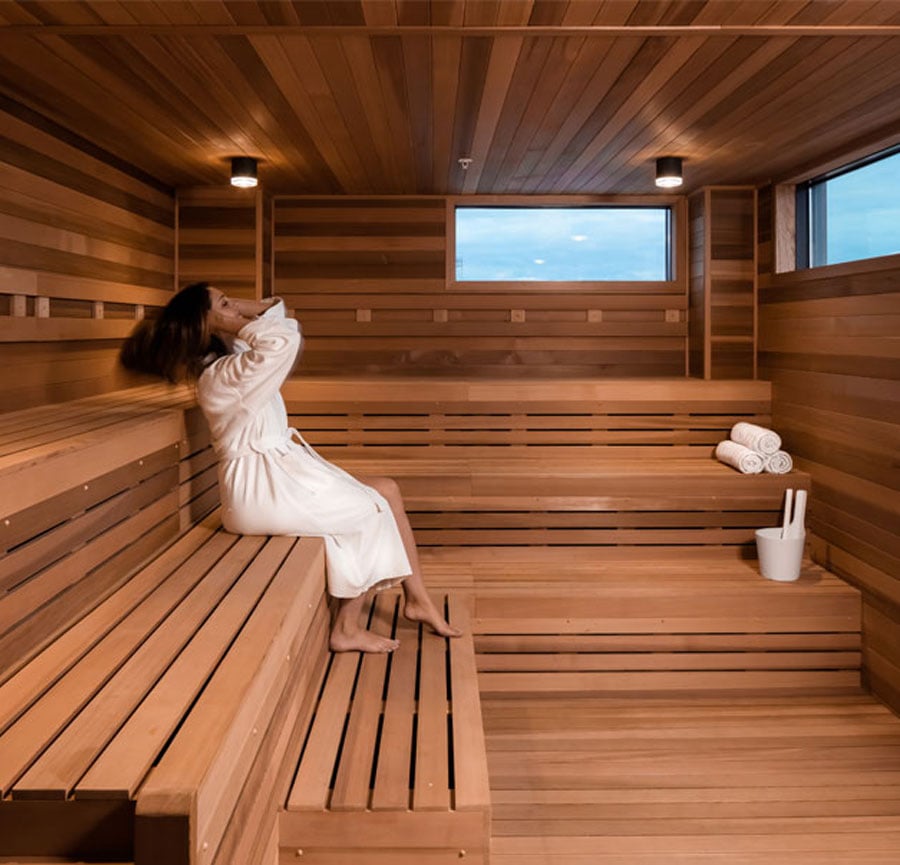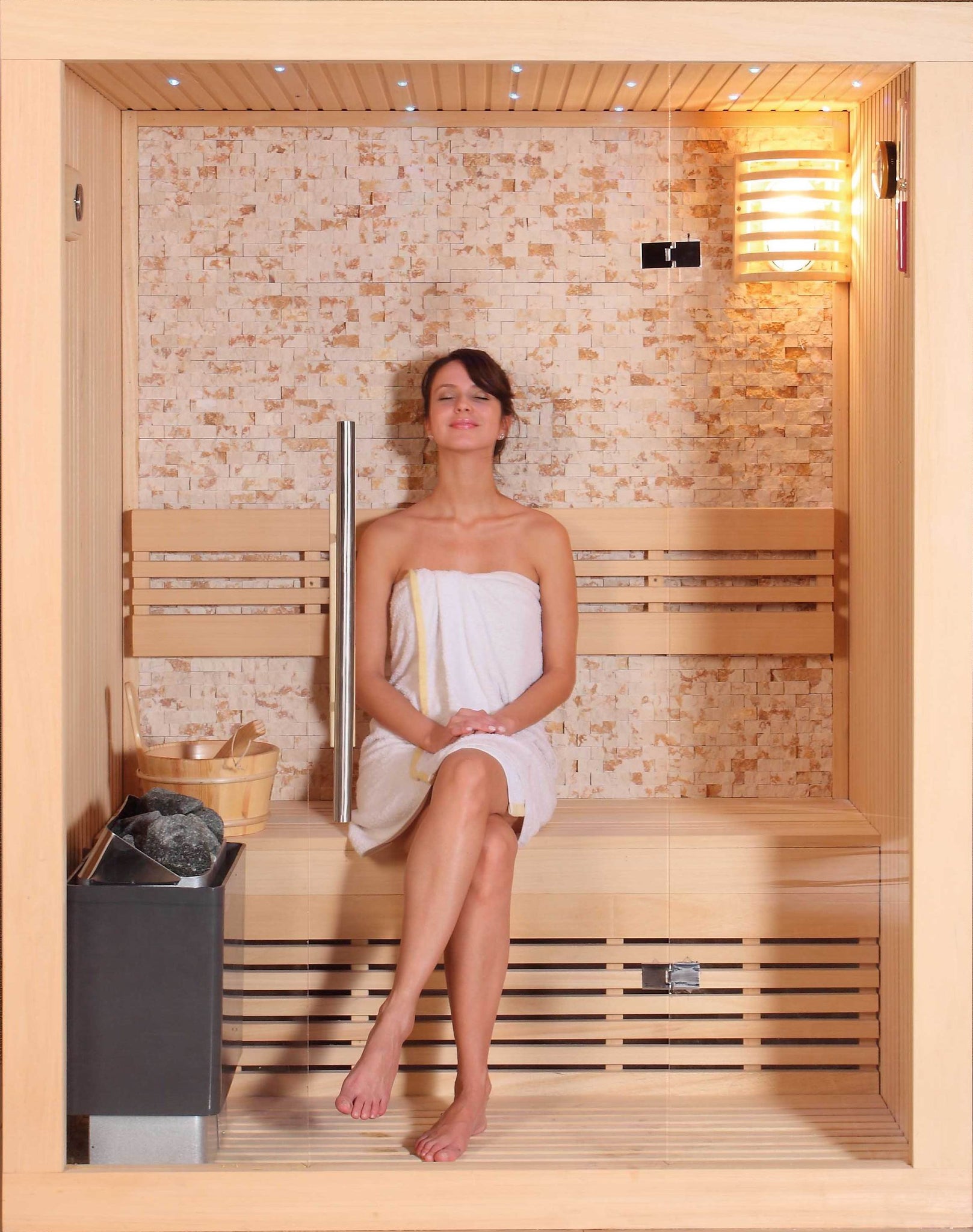The Main Principles Of Traditional Sauna
The Main Principles Of Traditional Sauna
Blog Article
Get This Report on Traditional Sauna
Table of ContentsFascination About Traditional SaunaTraditional Sauna Things To Know Before You BuyHow Traditional Sauna can Save You Time, Stress, and Money.Things about Traditional Sauna
Most of the weight shed in a sauna is water loss and is re-gained upon rehydrating. However, undoubtedly sauna can be a vital part of a healthy weight reduction program. To consider the distinctions between traditional and IR saunas, I will divide these into proven, theoretical, and produced differences.Thus, the most popular point in the saunawhich goes to the ceiling directly over the sauna heateris generally in between 185 and 190 F. Traditional Sauna. Claims that a conventional sauna goes beyond 200 F is merely not real and not applicable for electrical saunas offered in the United States. The temperature level for a far-infrared sauna is generally set between 120 and 140 F; nevertheless, unlike the traditional sauna, the goal in and IR room is not to attain a high temperature
Because of this, the temperature distinction is nearly irrelevant, considering that extreme sweating results in both sauna types, however the technique of warming the body is various. In an IR sauna the bather will certainly really feel hot and will sweat profusely, yet at much lower temperatures. Therefore, if the objective is to invest longer periods of time in the sauna, the IR sauna is a good choice.

Top Guidelines Of Traditional Sauna
When the heat is achieved, the elements cycle on and off to preserve the high temperature. Many standard sauna customers take pleasure in putting water over the rocks to develop vapor to elevate sauna moisture degrees. The benefits of pouring water over the rocks consist of: making the space more comfortable, moistening the nasal passages, and enabling the usage of aromatherapy by mixing important oils with the water.
In a far-infrared sauna, the warm front permeate the body to properly heat up the body and elevate the body core temperature level. To accomplish this increased temperature level, Far-infrared emitters develop infrared energy which is close to the same wavelength as that which the body naturally emitsoften described as the "Important Range" of 7 to 14 microns), so the energy is well received by the body.
When the power enters the body, it creates the body temperature to increase and inevitably results in sweat. In an infrared sauna it is essential for the emitters/heaters to continue to be on almost regularly. Considering that there is no mass of rocks to preserve warmth, the sauna will cool if the emitters turned off.
As pointed out over, the sauna bather in an infrared space desires to place himself before running emitters to obtain maximum gain from the warmth. The heating time for the 2 spaces can be very various, relying on exactly how the spaces are made use of. For a conventional sauna, a bather needs to allow 30-40 minutes for the area to accomplish a preferred temperature and to effectively pre-heat the rocks.
3 Simple Techniques For Traditional Sauna
A well built sauna will typically attain a temperature of 150-160 F in concerning 30-40 mins (Traditional Sauna). For hotter temperatures, the room may need to heat for a longer period. As soon as the area attains set temperature, the heating system will certainly cycle on and off, generally operating concerning 50% of the time. The insulated walls and the click to investigate heated rocks will keep the space warm and at secure temperatures.
To some, 15 mins was "lost" while the infrared energy warmed the timber panels instead of heating a body, while others find a pre-heated room to be much more comfortable and think a raised beginning temperature is necessary to begin sweating. click this site The size of recommended use for every space is around the very same (10-15 mins per session); nevertheless, because of the lower air temperature levels and the ability to feel the impacts of infrared heat faster than a standard sauna, it is not unusual for an individual to spend a total of 20-30 minutes in an infrared sauna.
Standard saunas tend to be larger (for this reason utilize even more power) than infrared saunas, although traditional saunas are definitely readily available in one and 2 individual dimensions as well. For a two-person typical sauna, 5x6 or 5x7 dimension is most popular. The top bench can pleasantly seat two or three individuals and is also long sufficient to exist down throughout the sauna session.


The ordinary cost per kWH of electrical energy in the U.S. is around $0.11, so a 4.5 kW heater will certainly set you back approximately $.50 to run for one hour, if the heater runs constantly for one hour. Generally a sauna heating system will certainly run for 75% of the very first hour and 50% of subsequent hours on since the components cycle once the set temperature is attained.
Not known Factual Statements About Traditional Sauna
A 2 individual far-infrared area is typically physically smaller sized than a standard sauna, frequently about 4' x 4' or smaller. The IR furnace is usually 1.5-1.7 kW utilizing a 120 volt 15 amp plug-in service. Considering that the area can be used sooner than a sauna area, we will certainly think the space is utilized for to of an hour including heat up time.
There is a seldom talked about distinction in the social experience between the two rooms. While our culture has actually lost a few of the social benefit of the conventional sauna experience, it can be really socially rewarding. From household time in the sauna, to heart-felt conversations with significant others, to sauna partiesthe typical sauna experience can lead to intimate mingling.
The majority of greater end infrared areas include tinted light treatment, sound systems and full-glass check that fronts. The dimension of many rooms enable for 2 people to conveniently use the space, while some styles might permit a 3rd or 4th individual to use the area. Custom infrared areas are additionally available, with room dimensions offered approximately 7' x 8' x 7' high.
Report this page